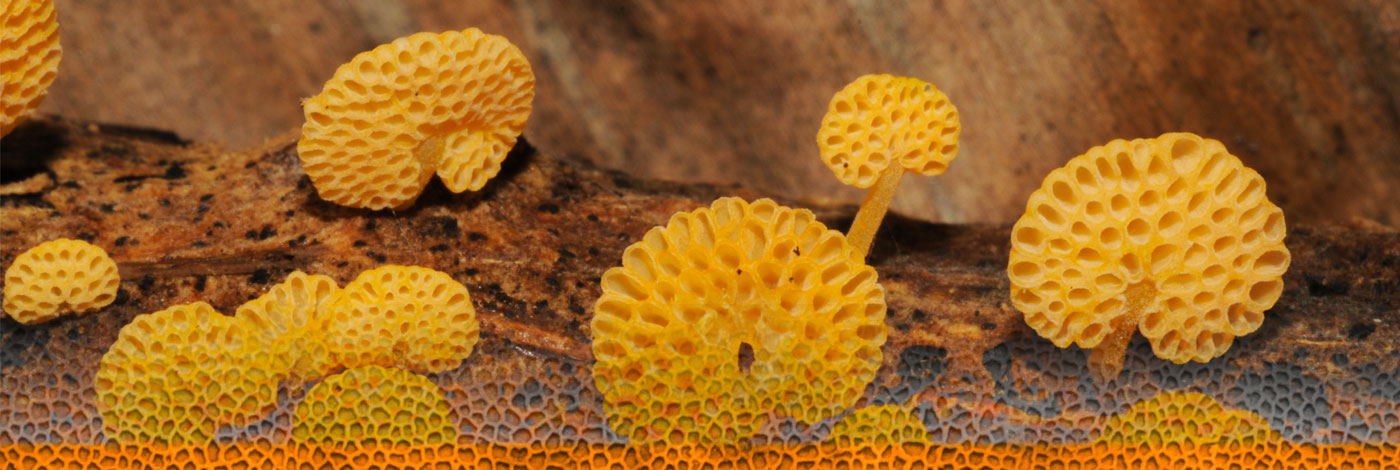
 Cryptogamie, Mycologie
25 (1) - Pages 57-81
Cryptogamie, Mycologie
25 (1) - Pages 57-81In the framework of a study of the ecology of wood-inhabiting fungi from a tropical forest on the north coast of Papua New Guinea, the effect of temperature on the in vitro growth of 66 lignicolous fungi (41 Polyporaceae, 9 Hymenochaetaceae, 4 Pleurotaceae, 4 Xylariaceae, 2 Ganodermataceae, 2 Corticiaceae, 1 Stereaceae, 2 Auriculariaceae, 1 Schizophyllaceae) was studied. The results showed a good correlation between the behaviour in culture and the characteristics of the habitat, especially the density of the vegetation cover. This is specially striking if one considers the species respectively with the narrowest and the broadest ecological amplitude. A first group showed in culture a narrow spectrum with a well marked growth optimum at around 30°C which is the average local temperature. This group of species (Auricularia cf. mesenterica, Coriolopsis caperata, Daedalea sprucei, Hexagonia tenuis, Hypoxylon haematostroma, Microporus affinis, Microporus xanthopus, Phellinus adamantinus, Phellinus cesatii, Phellinus glaucescens, Phellinus melanodermus, Polyporus squamosus, Rigidoporus lineatus, Stereum lobatum, Trametes demoulinii, Xylaria papyrifera and Xylocoremium hoffmannii) is restricted to dense vegetation cover and thus grows in an environment buffered against temperature variations. The second group showed in culture a growth optimum over a wide range of temperatures. This group of species (Coriolopsis floccosa, Coriolopsis polyzona, Flavodon flavus, Gloeophyllum striatum, Lentinus concinnus, Lentinus squarrosulus, Lentinus strigosus, Pycnoporus sanguineus, Schizophyllum commune, Trametes menziezii, Trametes pavonia, Trametes scabrosa and Trametes villosa) showed a very large ecological amplitude. These species are encountered under dense vegetation as well as in open habitats, and are thus exposed to large temperature variations. An interesting feature from the standpoint of biodiversity distribution is that core area of forests with more buffered temperature contain a high diversity of species, which would not be able to grow outside those forests. Some subcosmopolitan species (Schizophyllum commune, Gloeoporus dichrous) show a spectrum in agreement with their wide latitudinal distribution, while Polyporus squamosus seems at the limits of it possible growth in an equatorial environment.